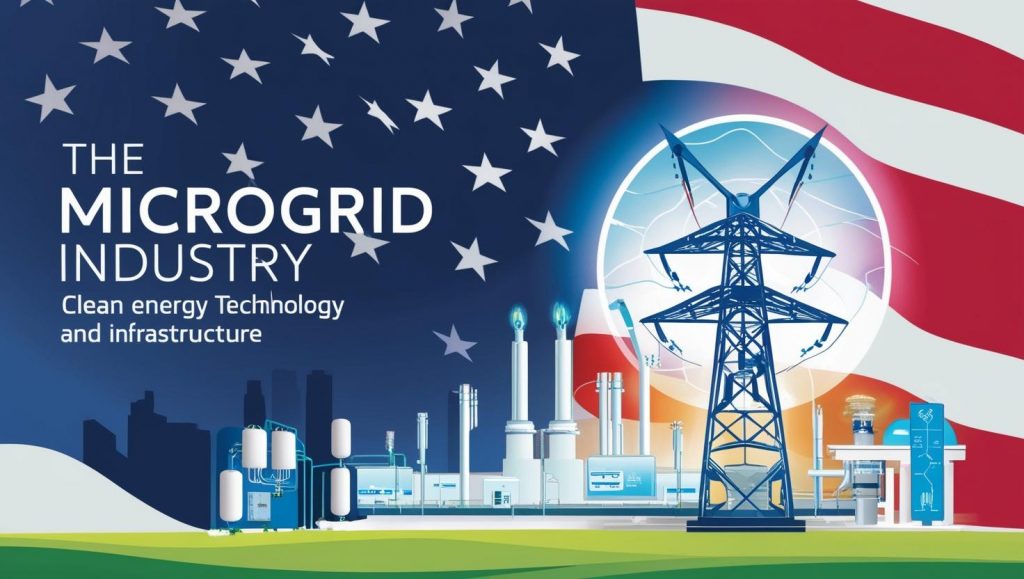The microgrid market a critical pillar in the transition to resilient and decentralized energy systems, has been notably influenced by shifts in U.S. trade policy over the last decade. The imposition of tariffs during the Trump administration, particularly on imported solar panels, batteries, and electronics—many of which are essential for building microgrid infrastructure—initially posed substantial challenges. However, out of these disruptions, new opportunities have emerged, prompting innovation, regional diversification, and strategic recalibration across the sector.
Overview of the Microgrid Market
Microgrids are independent energy systems that can operate autonomously or in tandem with the central grid. They provide enhanced reliability, integrate renewable sources, and serve as a backbone for energy resilience in the face of natural disasters or grid failures. With rising demand from critical sectors such as healthcare, military, education, and remote communities, the U.S. microgrid market has seen significant momentum in recent years.
Technological advances in battery storage, smart grid infrastructure, and decentralized energy generation have been key drivers. However, the growth trajectory was tested during the Trump administration due to a wave of tariffs targeting imported components central to the energy sector.
Book Your “Trump Tariff Threat Assessment”
https://www.marketsandmarkets.com/pdfdownloadNew.asp?id=917
Initial Disruption from Trump-Era Tariffs
The tariffs, aimed at reducing trade deficits and promoting domestic manufacturing, increased the cost of crucial hardware like solar panels, lithium-ion batteries, inverters, and control systems much of which is imported from China. These additional costs strained project budgets, delayed deployments, and prompted a reevaluation of supply chains. Small to mid-size developers were particularly vulnerable, as they often lacked the financial cushion to absorb these sudden price hikes.
Yet, while the initial impact of these tariffs was disruptive, they also set in motion a reevaluation of how and where microgrid systems are sourced, assembled, and deployed.
Emerging Opportunities Amid Disruption
The microgrid industry began to adapt by exploring domestic manufacturing partnerships, reshoring certain components, and investing in alternative suppliers from tariff-exempt countries. These changes not only diversified supply chains but also reduced long-term dependency on single-source imports.
Government stimulus and clean energy incentives introduced in the years following the tariff measures helped counterbalance the cost pressures. Programs like the Infrastructure Investment and Jobs Act (IIJA) and the Inflation Reduction Act (IRA) have since injected federal funding into energy resilience and clean technology, offering a renewed boost to microgrid adoption across the country.
Moreover, the disruption catalyzed innovation. Developers turned to modular microgrids, advanced energy management software, and integrated solutions that could be customized based on locally sourced components. The tariff-induced urgency to optimize costs also accelerated the use of AI and digital twin technologies in microgrid design and performance forecasting.
Strategic Path Forward for the Industry
As the industry looks ahead, there is a clear shift toward domestic capability building. U.S. manufacturers are scaling up production of energy storage systems, smart controllers, and solar hardware. This not only insulates the market from future trade volatility but also opens the door to job creation and industrial growth within the country.
At the same time, microgrid developers are becoming more agile, forming public-private partnerships, and aligning with local utilities to scale deployment in urban, rural, and islanded regions alike. The growth of community resilience programs is also fueling demand for microgrids tailored to local energy needs.
The Trump-era tariffs undeniably created barriers for the U.S. microgrid market but within those barriers lay the seeds of opportunity. Today, the industry is emerging stronger, more innovative, and increasingly self-reliant. By navigating these trade-induced disruptions with strategic foresight and adaptability, the microgrid sector is poised to play a transformative role in shaping America’s clean energy future.

